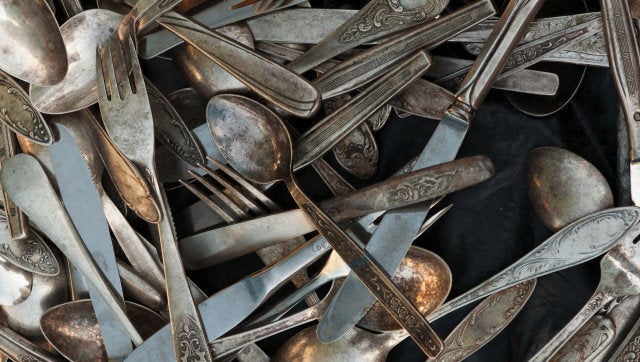
Excerpted from "Fabulous Finds" by J. Lee Drexler and James R. Cohen. Available from Quill Driver Books, an imprint of Linden Publishing. Copyright © 2011 by J. Lee Drexler and James R. Cohen
People sometimes get cheated buying silver. As an appraiser, I have heard of some incredible mistakes people have made both in the United States and abroad. First, it is necessary to know some relevant facts. Sterling silver is 925 parts silver and 75 parts alloy. That is why sterling silver is often market "925," particularly if you buy it abroad. Silver items made in Italy or Germany are marked "800" which means they are 800 parts silver and 200 parts alloy. Modern silver items are worth less if they are 800 or 835 rather than 925. However, if it is a well-made piece, the differences are very slight.
As has been the practice for hundreds of years, all silver is marked with either a hallmark, number or inscription. If you know how to look for it and what to expect, you will find it. In England, the mark is a running lion, along with a letter for the date on which they made each piece of silver. In France, there is a mark consisting of a helmeted man. In old russian silver, which is quite valuable, the mark "84" is used. A great deal of silver plate is marked "EPNS" (electroplated silver on nickel), or with varied letters or numbers. However, sometimes silver plate is passed off as sterling silver.
The problem is that it is very difficult for the layperson to tell if something is sterling silver or silver plate. "Real" silver, as indicated above, is usually 92.5 percent, 83.5 percent, or 80 percent pure silver -- marked "925," "835," or "800" respectively. But silver plate is a coating of silver over another metal, and unless it is a fine antique, it is worth only a small fraction of real silver. In Mexico, silver called Alpaca is actually silver plate, but some merchants try to fool you by calling it Mexican silver. When my friend was in Mexico sitting on a beach, a peddler offered her a pretty silver bracelet marked with "925" and the government stamp "Hecho en Mexico." She was sure it was silver and so she bought it for $100. When she returned home, the bracelet's color had started to change, and she brought it to me for a test. I cut into the bracelet (in a place that would not show), put a little hydrochloric acid on it, and it fizzled away, showing the green color that indicated there was copper underneath. Within a week, the color of the bracelet had changed completely to an ugly green, making it unwearable. A word to the wise: When in Mexico, do not buy silver from street peddlers!